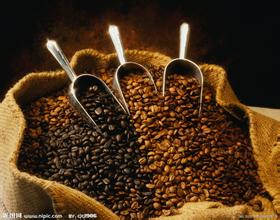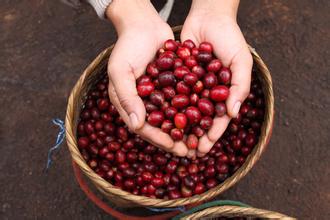How much is Blue Mountain Coffee?
Method of eating: Chewing to extract its juice Produced in: Arabs
Species: Cuban coffee, Brazilian coffee Representative: Cat poop coffee
directory
1 Overview
2 Specifications
3 color
4 selects
5 Tips for Making
6 production
7 Benefits
8 Sources of Origin
9 Big names.
10 classification
11 category
12 picked.
production method
13 Country of origin and name
Brazil
blue Mountain
Colombia
Mandheling
Kona
production method
dry type
water washing type
14 Nutrients
caffeine
tannic acid
fatty
protein
sugar
minerals
Coffee Bean-Overview
coffee beans
Coffee beans
Small and round dark brown coffee beans, in the grinder quietly exudes a fragrant fragrance, into the cup to present the beautiful color of amber, this is the average person for coffee very deep impression of three.
As you explore the history of coffee and its beauty, you can also see the coffee trees that are being caressed by the tropical sun and their green leaves sparkle. It has a small white flower similar to jasmine, and its fruit changes from green to yellow green and finally turns red. Coffee beans are the seeds in its fruit.
Also, if you visit a coffee bean refiner, you will surely see the red flesh called coffee cherries and the fresh green beans with the endocarp and silver skin removed. These are the coffee beans for export.
Coffee is grown in about 60 countries, mostly in areas with elevations of 300 to 400 meters, and sometimes in highlands with elevations of 2,000 to 2,500 meters, but it is said that the quality is better when planted on hillsides above 1500 meters.
The most suitable conditions for cultivating coffee trees are: the average annual rainfall is 1500~2000 mm, and the average temperature is about 20 degrees, and there will be no frost.
Coffee is an evergreen tree belonging to the Accanaceae family. If it grows wild, it can grow to more than eight meters. However, in the farm, the height is cut to about two meters to maintain the quality of coffee beans and facilitate management.
At present, the most important tree species planted are Arabica species, Robusta species (Kanefra species) and Liberica species. It can also be subdivided into dozens of varieties, in production, circulation and trading, will also be distinguished.
Even in the same producing country, the climate, altitude and soil quality of each region have subtle effects on the flavor and quality of coffee beans, as well as their own characteristics. Therefore, depending on the variety, origin, brand of different, will have their own different attributes; so can not be a country's coffee beans characteristics, only to describe in one sentence!
Coffee Bean-Specifications
coffee beans
Washable coffee beans
A. Washable/non-washable
Washing type: In the sink, after rubbing with water flow and utensils, remove pulp and colloid and dry, called washing type coffee beans, its quality is uniform.
Non-washing type: After natural drying in sunlight, remove the pulp and peel with a shelling machine, and its quality is unstable.
B. Flat beans/round beans
Coffee fruit is composed of two oval seeds facing each other. One side of the joint is a flat joint, called a flat bean. But there is also a round seed, called round beans, which taste no different. Ripe and red coffee cherries have multiple structures. In the middle is the precursor of coffee beans, light green seeds.
Generally speaking, coffee fruit is composed of two oval seeds opposite each other. The other side of the joint is a flat joint, so it is called flat beans. But there are also ones that consist of a round seed and taste no different.
C. Size of coffee beans
Filter number (mesh no.)
pingdou
20~19 extra large, 18 large, 17 quasi-large, 16 ordinary, 15 medium, 14 small, 13~12 extra small
round bean
13~12 large, 11 quasi-large, 10 ordinary, 9 medium, 8 small
D. Elevation
According to the elevation of the cultivated land, it can be divided into three, four and seven grades. Generally speaking, upland beans are of better quality than lowland beans, and because of increased freight costs, prices are higher.
Grade Name Elevation (m)
1. Special grade beans 1.500~, 2. High grade beans 1.200~1.500, 3. Medium grade beans 1.000~1.200, 4. Special grade washed beans 900~1.000, 5. High grade washed beans 760~900, 6. Super grade washed beans 610~760, 7. Excellent washed beans ~610
E. Quality
According to statistical methods, the type and quantity of impurities contained in a certain amount of samples are converted into a percentage of "defect number" to determine the basis of quality class. The smaller the number of defects, the higher the quality.
F. Taste
Brazil, Haiti, Kenya, Sayi and other countries have their own taste test methods, after taste testing before export.
From harvest to shipment
coffee beans
Coffee beans
After harvest, the fruit must be removed from the outer skin, pulp, endocarp and silver skin before being shipped to the market. There are two methods: drying (also known as natural method or non-washing) and washing. The dry method is simpler.
First of all, just picked fruit will be widely spread in the sun field for a week or two, until the fruit issued a cracking sound so far, natural drying.
After that, the husker removes the dried pulp, endocarp and silver skin.
Coffee beans refined in this way are slightly sour and bitter. Almost all coffee beans grown in Brazil, Ethiopia, Yemen and other places are obtained in this way. The disadvantage of this method is that it is easily affected by weather and easily mixed with defective beans and other impurities. Therefore, it must be carefully screened.
Another method is washing, that is, the harvested fruit is placed in a flowing tank, after removing the floating fruit, the skin and pulp are removed by a pulp remover. Then put it in the sink and remove the floating pulp. After that, move into the fermentation tank, soak for half a day to a day, and then dissolve the colloid on the surface of the fermented coffee beans. After washing with water, drying for several days, drying with a machine, and finally removing the endocarp with a huller, it becomes a raw coffee bean that can be used as a commodity.
Washable coffee beans have a better color and less impurities. Colombia, Mexico, Guatemala and other countries about 70% of the production of this method.
Sometimes in the fermentation process, if not handled properly, it may emit fermentation odor and its characteristic sour taste; but if handled properly, all kinds of beans can emit their unique coffee aroma.
In order to be able to reach the destination intact, raw coffee beans are packed into sacks and placed in special containers for remote merchant ship travel.

Important Notice :
前街咖啡 FrontStreet Coffee has moved to new addredd:
FrontStreet Coffee Address: 315,Donghua East Road,GuangZhou
Tel:020 38364473
- Prev

Introduction of boutique Bali coffee beans in Indonesia the characteristics of Bali coffee beans
BaLi Island is a famous tourist area in Indonesia, more than 1000 kilometers away from the Indonesian capital Jakarta, across the sea from Java Island where Jakarta is located. Bali covers an area of more than 5560 square kilometers and has a population of about 3.15 million. Bali is in the tropics with a hot and humid climate. Bali is mostly mountainous, with vertical and horizontal mountains, high in the east and low in the west. There are still four or five on the island.
- Next

Introduction of fine cat feces coffee beans Characteristics of cat feces coffee beans Price of fine coffee
Cat poop coffee, Indonesia. In the early 18th century, the Dutch established coffee plantations in the Indonesian colonies of Sumatra and Java, and prohibited the locals from picking and eating their own coffee fruits. Indonesian locals accidentally discovered that civet cats love to eat these coffee fruits and will expel the beans intact when defecating. Civets only pick the best.
Related
- Does Rose Summer choose Blue, Green or Red? Detailed explanation of Rose Summer Coffee plots and Classification in Panamanian Jade Manor
- What is the difference between the origin, producing area, processing plant, cooperative and manor of coffee beans?
- How fine does the espresso powder fit? how to grind the espresso?
- Sca coffee roasting degree color card coffee roasting degree 8 roasting color values what do you mean?
- The practice of lattes: how to make lattes at home
- Introduction to Indonesian Fine Coffee beans-- Java Coffee producing area of Indonesian Arabica Coffee
- How much will the flavor of light and medium roasted rose summer be expressed? What baking level is rose summer suitable for?
- Introduction to the characteristics of washing, sun-drying or wet-planing coffee commonly used in Mantenin, Indonesia
- Price characteristics of Arabica Coffee Bean Starbucks introduction to Manning Coffee Bean Taste producing area Variety Manor
- What is the authentic Yega flavor? What are the flavor characteristics of the really excellent Yejasuffi coffee beans?

